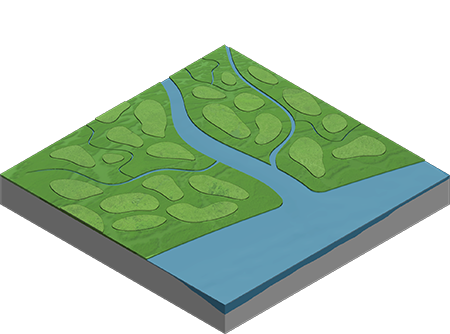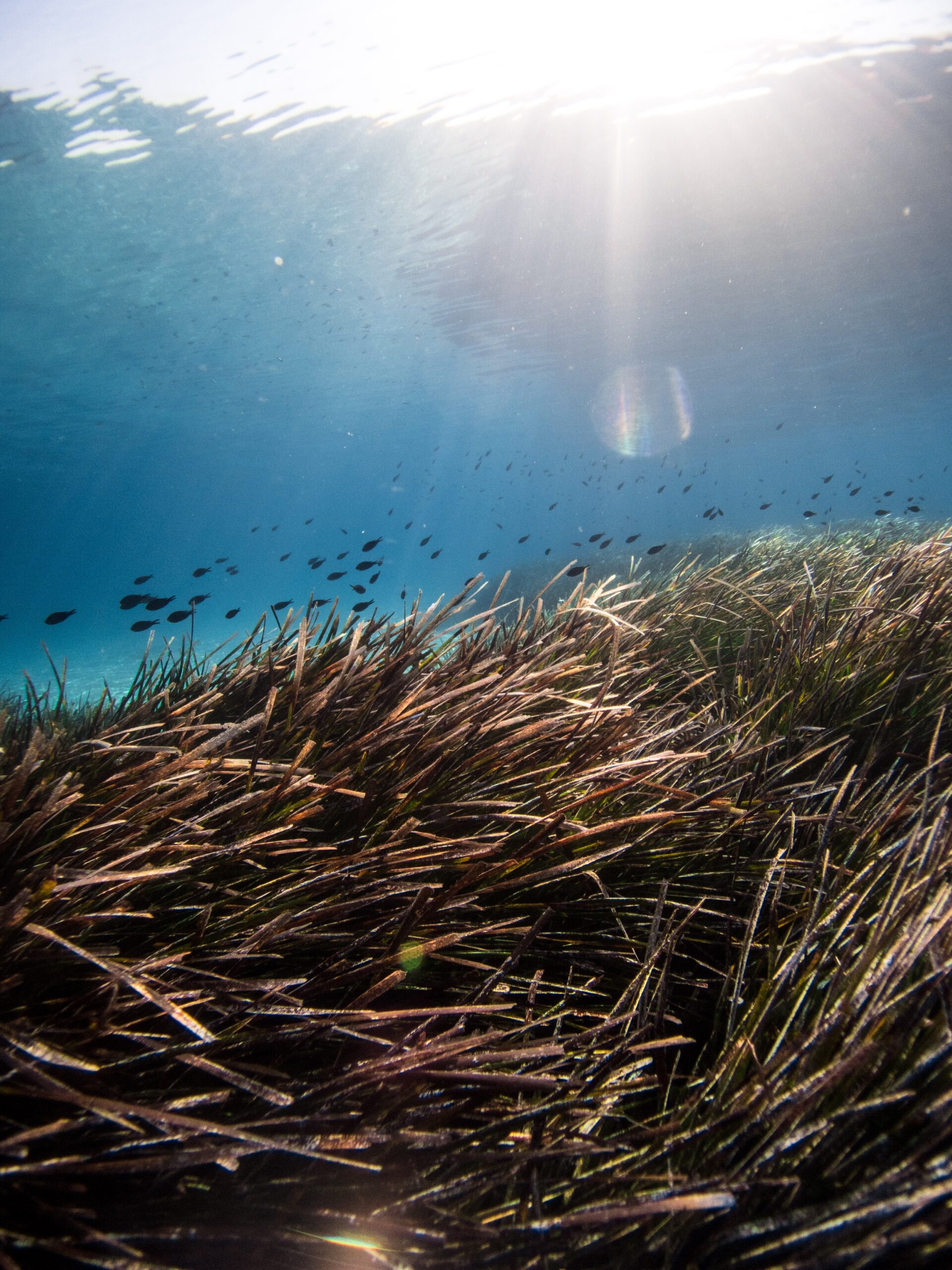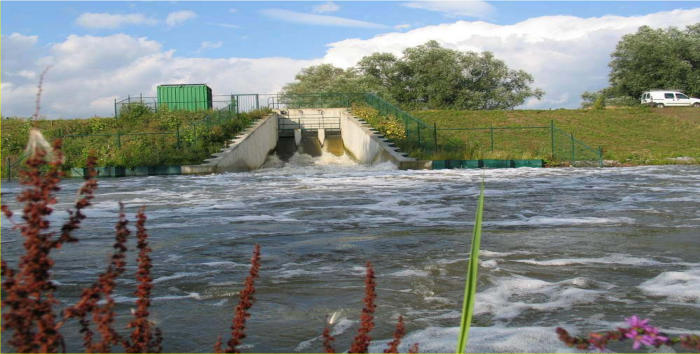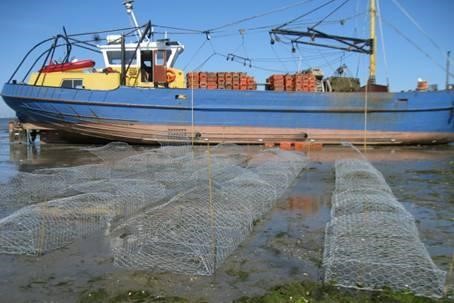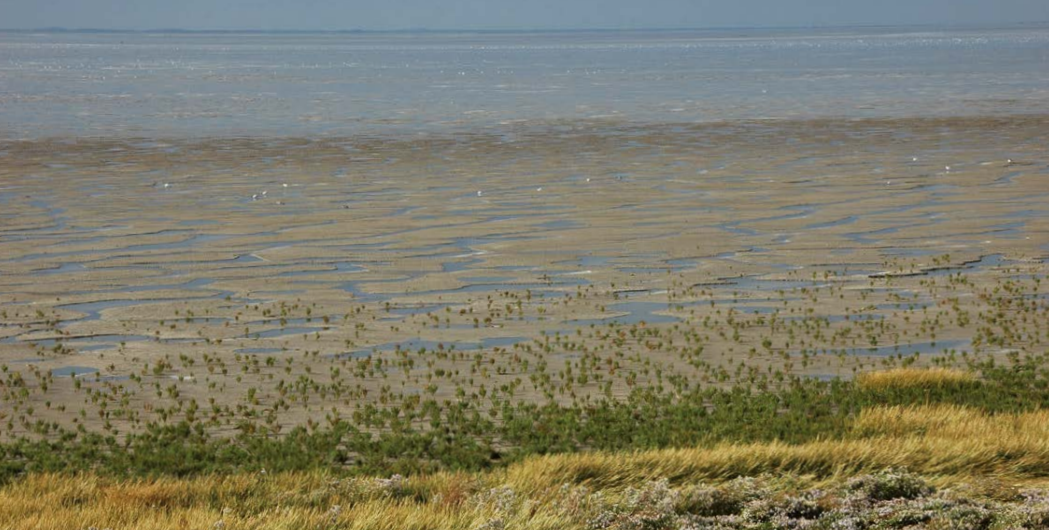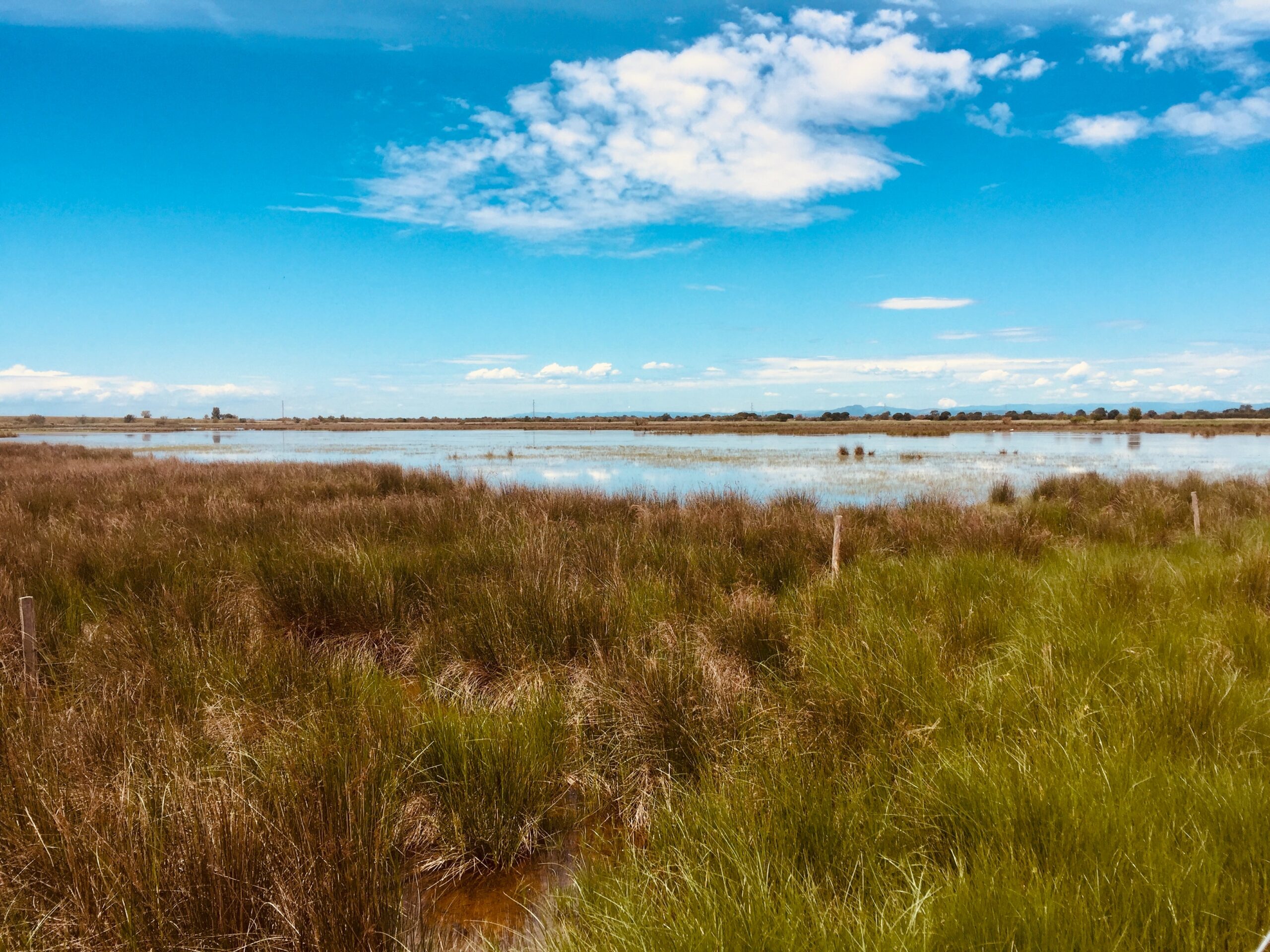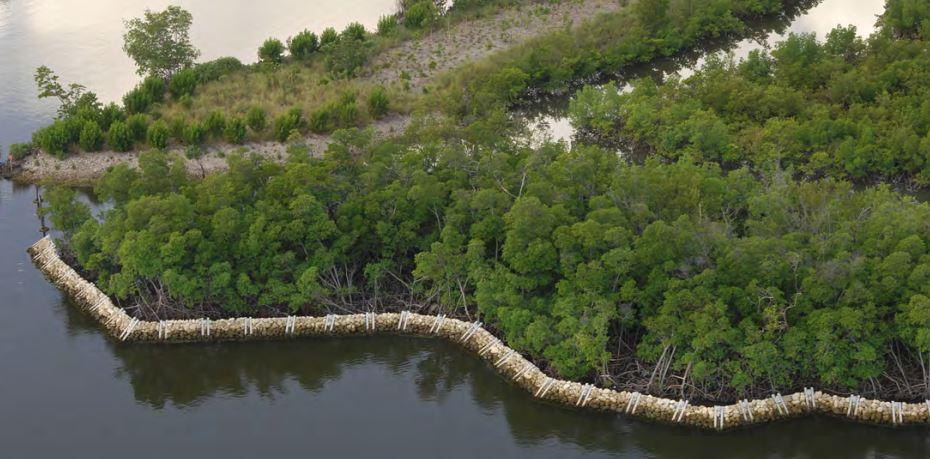Coastal Marshes
Coastal wetlands occur along marine, estuarine, and freshwater coastlines and may be influenced by tidal or wave action or by freshwater from runoff, rivers, or ground water. Coastal wetlands cover about 40 million acres and account for approximately 38% of total wetland acreage in the contiguous United States, with the vast majority being found in the Southeast and Gulf of Mexico.
Tidal salt marshes are among the most prevalent types of coastal wetlands and are largely characterized by regular inundation over the course of a normal tidal cycle as well as the presence of salt tolerant plants. Salt marshes have one of the highest rates of primary productivity associated with wetland ecosystems because of the inflow of nutrients and organics from surface and/or tidal water. Freshwater coastal marshes, such as those along the Great Lakes, play similarly important roles and are vital to the overall health of the broader lake ecosystem.
Hazard Mitigation
Coastal wetlands are often referred to as “sponges” because of their ability to absorb wave energy during coastal storms or normal tide cycles. By reducing the energy of the waves, coastal wetlands reduce the potential for erosion as well as mitigate the impacts of coastal flooding by reducing wave heights. Larger, more intact expanses of wetland are more effective at reducing coastal hazards, however even some relatively small marshes can prove beneficial to neighboring communities.
Studies of the role that coastal wetlands in the United States play in mitigating damage from hurricanes and other coastal storms have found annual damage reduction estimates of more than $20 B. A recent study entitled “Coastal Wetlands and Flood Damage Reduction” looked at the benefits provided by coastal marshes during Superstorm Sandy in 2012. The study found that coastal wetlands reduced property damages by more than $625 M across the Sandy impacted area, with an average of about 10% damage reduction in each state. A series of models conducted during the same study to assess the benefits provided across a wider array of storms found that overall coastal marshes and wetlands were providing approximately 20% reductions to property damage, including to upland communities that did not immediately abut marsh or wetland areas.
In addition to currently providing erosion and coastal flooding benefits, under the right circumstances – an abundant supply of sediment and clean water, a relatively gentle slope to upland areas, and a lack of physical impediments such as houses or seawalls – coastal marshes are capable of keeping pace with sea level rise. Therefore, coastal marshes are capable of maintaining their protective functions into the future without the same significant additional investments as may be necessary to maintain the protective benefits of more traditional built infrastructure approaches to coastal protection.

Threats
Coastal wetlands are being lost at a considerable rate across the United States, with estimates from the EPA as high as 80,000 acres a year between 2004 and 2009. Increasing rates of both urban and rural development are the primary drivers of wetland loss throughout the United States. Over half the population in the United States lives in coastal counties and these areas continue to be among the fastest growing in the country, putting ever increasing pressure on coastal property.
Land use changes within these coastal watersheds are altering the overall hydrology of the area, resulting in increases in runoff and changes in how and where water makes its way into wetland systems. Additionally, coastal development has profound impacts on the natural transport of sediment through the broader coastal system, an essential component that helps maintain and build up coastal wetlands and enables coastal wetlands to recover from the impacts of erosion and keep pace with sea level rise.
Co-Benefits
Coastal wetlands are among the most productive habitats on earth, and as such play an important role in the life cycles of an enormous number of rare and endangered species, as well as species that have great commercial and recreational value. By some estimates, over fifty percent of commercial fish and shellfish species in the United States rely on coastal wetlands for food, shelter, or nursery grounds. Additionally, a great number of migratory waterfowl and shorebirds use wetlands as stop over points along their migratory paths – providing opportunities for bird watching and hunting. Coastal wetlands also provide a unique combination of wildlife and scenic spaces, creating tremendous recreational opportunities from birdwatching to kayaking or canoeing to hunting and fishing.
In addition to absorbing wave energy, coastal wetlands are able to filter and absorb sediment and pollutants from landbased runoff before it reaches the ocean, improving overall water quality. Some coastal wetlands are also capable of capturing and sequestering large amounts of carbon. In fact, research has shown coastal wetlands to be amongst the most effective natural systems at carbon sequestration, achieving as much as 50 times the amount of sequestration into soils as the same area of tropical forest.
Additional Resources
The EPA has an excellent source of information on coastal wetlands, including specific guidance on managing various stressors to coastal wetlands.
NOAA has also compiled information and resources related to coastal wetlands as well as some regionally specific information on wetland trends throughout the United States.
